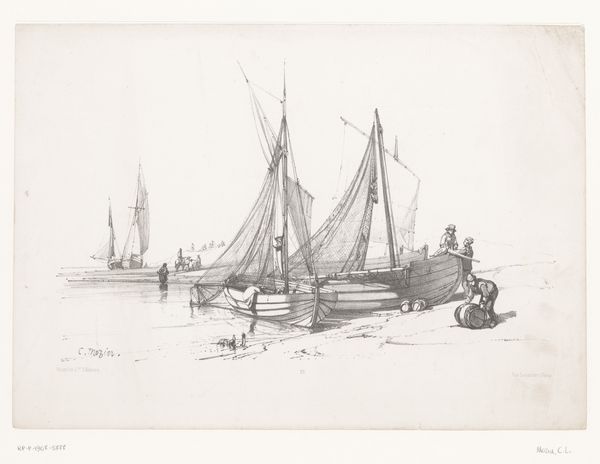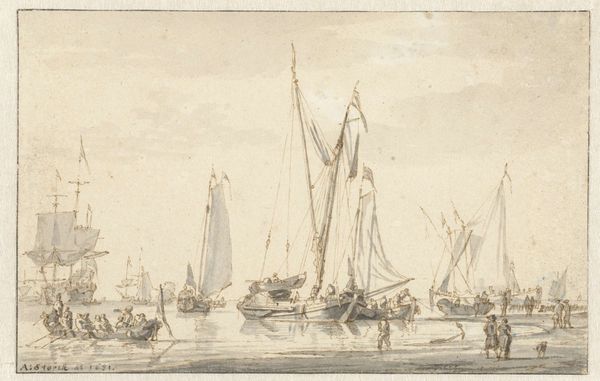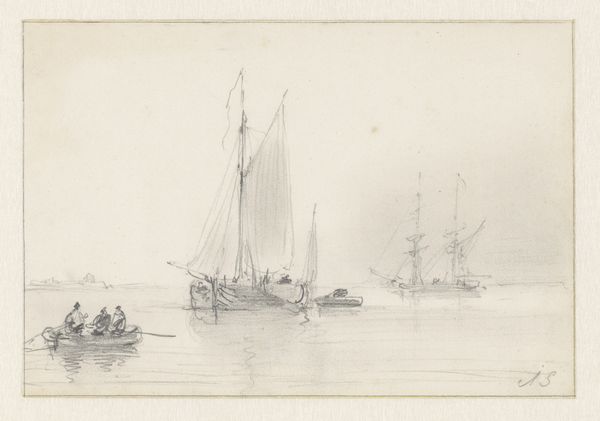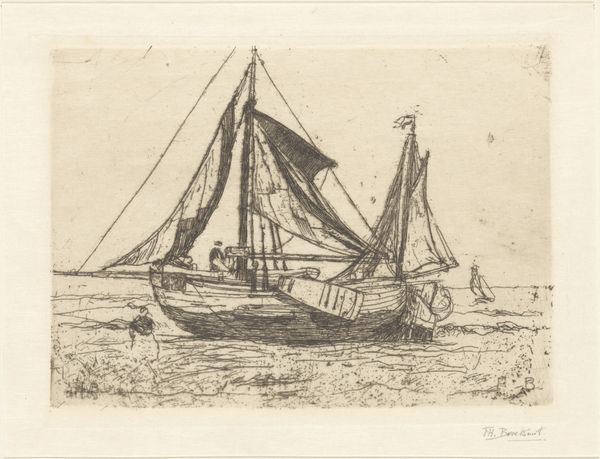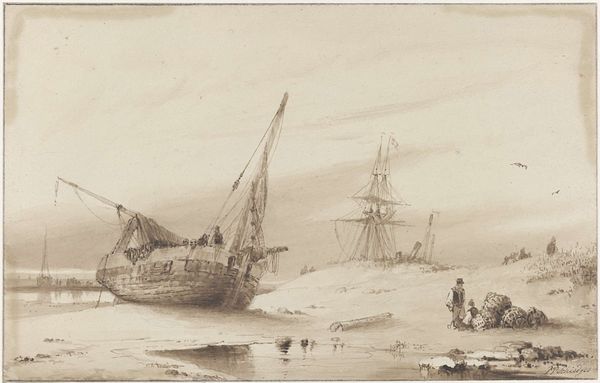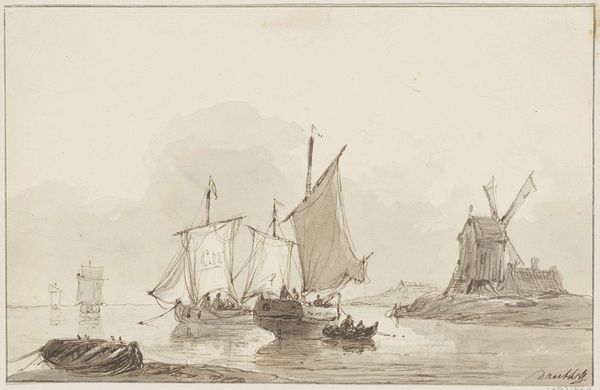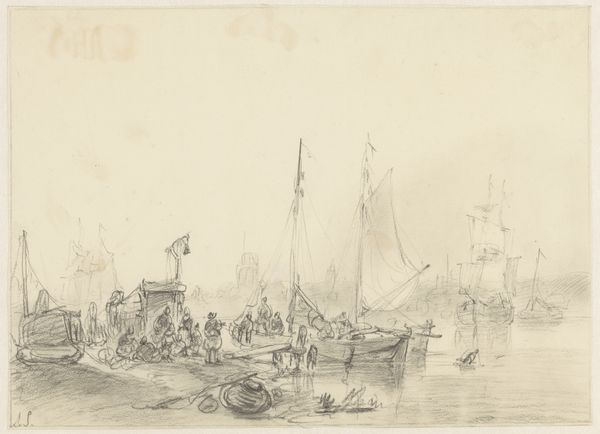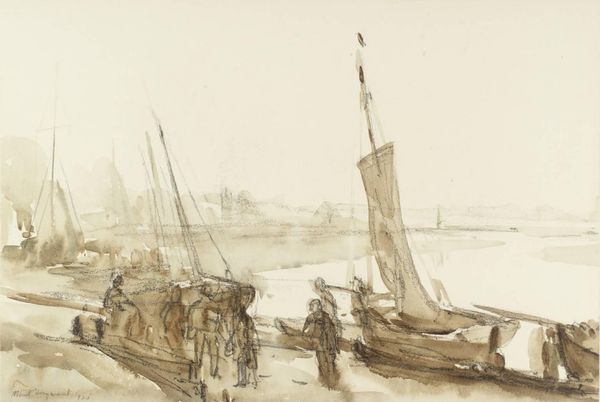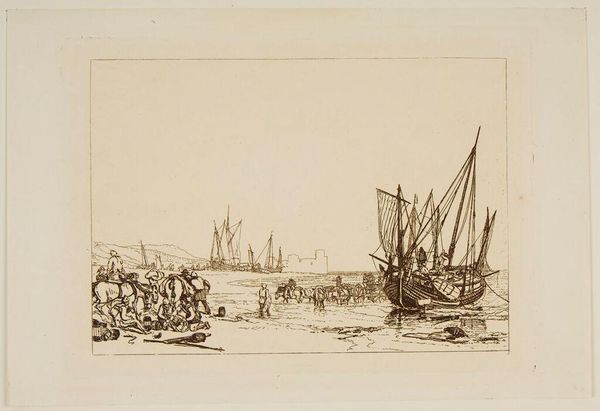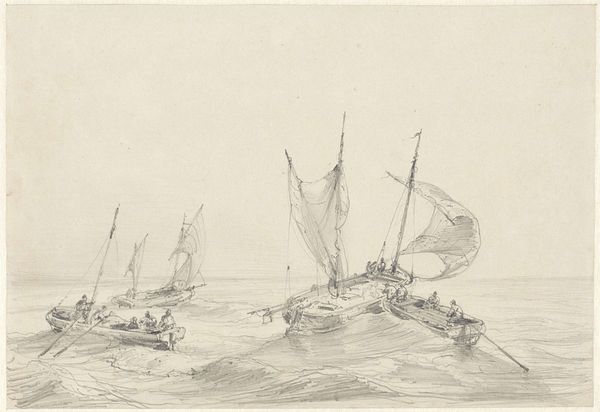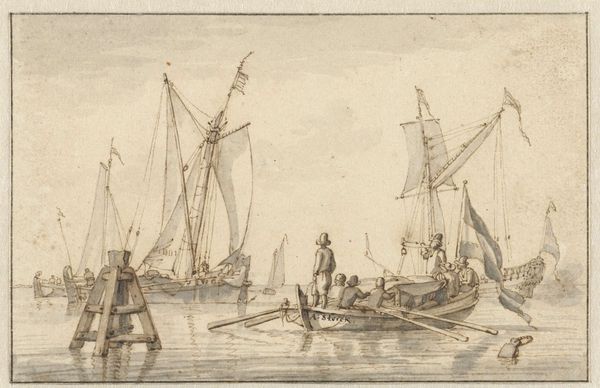
drawing, print, gouache, etching, paper, pencil
#
drawing
# print
#
gouache
#
etching
#
pencil sketch
#
landscape
#
etching
#
paper
#
romanticism
#
pencil
#
france
#
water
#
genre-painting
Dimensions: 185 × 257 mm
Copyright: Public Domain
Curator: Eugène Blery's "Harbor with Cutters," created in 1841, presents us with a glimpse into 19th-century maritime life, rendered through etching, gouache, and pencil on paper. It is currently held at the Art Institute of Chicago. Editor: It evokes a certain calm. The delicate etching creates soft, hazy light, and despite the activity on the boats, the muted tones feel quite peaceful. Curator: I see this not just as a depiction of a specific harbor, but as a representation of the burgeoning working class of 19th-century France, whose livelihoods were intimately intertwined with the sea. These aren't romanticized sailors; they’re laborers, part of a system both enabling and constrained by maritime commerce. Editor: Absolutely. Beyond the socioeconomic context, the ships themselves become powerful symbols. Vessels, journeys, crossings, even exile: so many of humankind’s hopes and anxieties play out within those simple visual containers. The way Blery emphasizes their towering sails gives them a slightly aspirational quality, don't you think? Curator: In examining the etching, the architecture barely discernible in the background—a fortification or port perhaps—draws our focus to the gendered nature of the public and private realms during this time. The sea served as the men's domain, for work and adventure. This brings up questions about the women whose experiences often remained invisible and unacknowledged, sustaining these seafaring lives. Editor: Indeed, while the drawing ostensibly captures a specific locale, it becomes a palimpsest layered with potential meanings. What stories do those hulls carry? And whose voices aren’t we hearing in the record? I appreciate that Blery offers enough detail for clarity, while still preserving a feeling of distance—a kind of melancholy—perhaps evoking the precarity of a fisherman’s existence. Curator: This work offers insight to the complicated narratives of progress and disenfranchisement present in 19th-century France. The viewer might explore how images participate in, or perhaps resist, established ideologies. Editor: A brief look reveals its detailed technique, but a longer consideration uncovers layered histories of symbol and culture that resonate powerfully, even now.
Comments
No comments
Be the first to comment and join the conversation on the ultimate creative platform.
